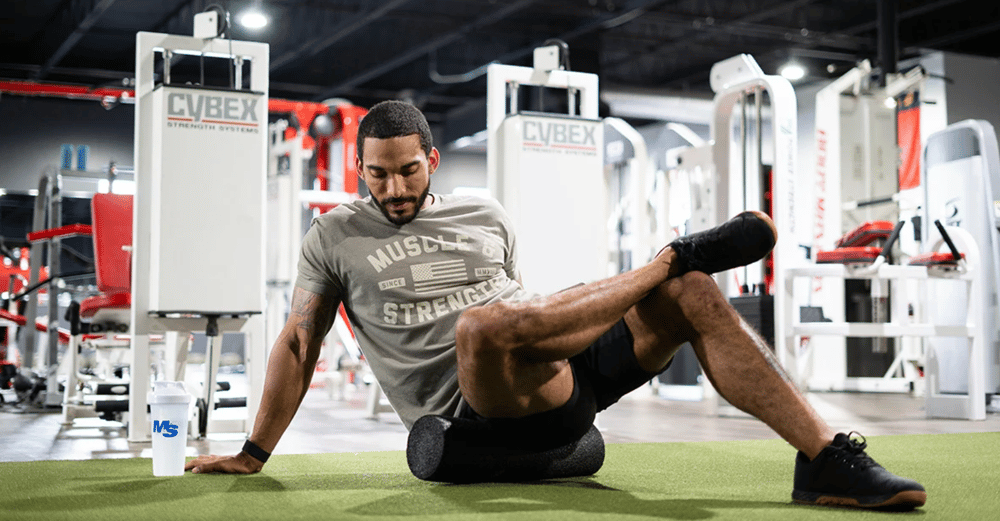ACTIVE RECOVERY WORKOUTS FOR PAIN MANAGEMENT
fitness Nutrition Aug 18, 2025 9:30:11 AM Kyle Receno 8 min read

Active recovery workouts involve low-intensity exercises designed to promote healing, reduce muscle soreness, and manage pain without overloading the body. These workouts enhance blood flow, improve mobility, and alleviate discomfort from intense exercise, injuries, or chronic conditions. This blog explores the science behind active recovery, its benefits for pain management, and a practical routine to incorporate into your schedule.
Why Active Recovery Helps with Pain Management
Intense exercise or injury can cause muscle soreness, joint stiffness, or inflammation. Active recovery promotes circulation, delivering oxygen and nutrients to tissues while removing waste products like lactic acid. This reduces delayed onset muscle soreness (DOMS), eases joint pain, and supports recovery without the stress of high-intensity workouts.
Key Benefits:
- Reduced Muscle Soreness: Enhances blood flow to alleviate DOMS.
- Improved Joint Mobility: Increases range of motion and reduces stiffness.
- Decreased Inflammation: Promotes healing by flushing out inflammatory markers.
- Enhanced Recovery: Speeds return to full activity or training.
- Mental Relaxation: Lowers stress, which can exacerbate pain perception.
Principles of Active Recovery
Effective active recovery focuses on low-intensity, low-impact movements that support healing without causing strain. Key principles include:
- Low Intensity: Keep effort below 50% of maximum to avoid fatigue.
- Controlled Movements: Emphasize smooth, deliberate motions to protect joints.
- Short Duration: Sessions of 10–30 minutes are sufficient for benefits.
- Frequency: Perform 2–4 times per week, depending on pain levels and activity.
- Listen to Your Body: Stop if pain worsens and consult a professional.
Active Recovery Workouts for Pain Management
Below are low-impact exercises to manage pain and promote recovery. Perform these on a soft surface (e.g., yoga mat or grass) with supportive footwear. Always warm up gently and consult a healthcare professional for chronic or severe pain.
1. Gentle Walking
Purpose: Increases circulation to reduce muscle and joint stiffness.
- How to Perform: Walk at a leisurely pace (2–3 mph) on a flat surface, swinging arms naturally.
- Duration: 10–20 minutes.
- Tip: Keep posture upright and avoid overstriding to protect joints.
2. Dynamic Stretching
Purpose: Improves flexibility and reduces muscle tension.
- How to Perform: Perform slow, controlled movements like leg swings (10 per leg), arm circles (10 per side), or cat-cow stretches (8–10 reps).
- Duration: 5–10 minutes.
- Tip: Move within a pain-free range and breathe deeply.
3. Bodyweight Mobility Flow
Purpose: Enhances joint mobility and lubricates connective tissues.
- How to Perform: Combine movements like bodyweight squats (10 reps, shallow depth), standing hip circles (8 per side), and shoulder rolls (10 per side) in a flowing sequence.
- Duration: 8–12 minutes.
- Tip: Keep movements slow and avoid pushing past discomfort.
4. Seated or Supine Yoga Poses
Purpose: Relaxes muscles and reduces tension in the back and hips.
- How to Perform: Practice poses like seated forward fold (30 seconds), supine twist (30 seconds per side), or child’s pose (30–60 seconds).
- Duration: 5–10 minutes.
- Tip: Use props like pillows for comfort and support.
5. Pool Walking or Aqua Jogging
Purpose: Provides low-impact resistance to improve circulation and reduce joint stress.
- How to Perform: Walk or jog slowly in waist-deep water, focusing on smooth strides and arm swings.
- Duration: 10–15 minutes.
- Tip: Use a pool with warm water (80–90°F) for added muscle relaxation.
Sample Active Recovery Workout (20–25 Minutes)
Incorporate this routine 2–4 times per week to manage pain and promote recovery:
- Warm-Up (3–5 Minutes): Gentle walking at a slow pace to prepare the body.
- Dynamic Stretching (5 Minutes): Leg swings (10 per leg), arm circles (10 per side), cat-cow (8 reps).
- Bodyweight Mobility Flow (8 Minutes): Shallow squats (10 reps), hip circles (8 per side), shoulder rolls (10 per side).
- Seated Yoga Poses (5 Minutes): Seated forward fold (30 seconds), supine twist (30 seconds per side), child’s pose (60 seconds).
- Cool-Down (3–5 Minutes): Gentle walking followed by static stretches for calves and hamstrings.
Alternative: If a pool is available, replace mobility flow with 10 minutes of pool walking.
Tips for Success
- Start Slowly: Begin with 10-minute sessions and increase as tolerated.
- Monitor Pain Levels: Stop if pain increases beyond mild discomfort; consult a professional.
- Combine with Recovery Tools: Pair with foam rolling or heat therapy for enhanced relief.
- Stay Consistent: Perform 2–4 sessions weekly for cumulative benefits.
- Hydrate: Drink 0.7–1 oz water per kg body weight daily to support tissue recovery.
Common Mistakes to Avoid
- Pushing Too Hard: High intensity can worsen pain; keep effort low (heart rate under 100 bpm).
- Ignoring Pain Signals: Sharp or worsening pain requires rest and medical evaluation.
- Skipping Warm-Ups: Cold muscles and joints are prone to injury; always warm up.
- Overdoing Frequency: Too many sessions without rest can delay recovery.
Who Can Benefit?
Active recovery workouts are ideal for:
- Athletes: Reduces soreness from intense training or competition.
- Chronic Pain Sufferers: Eases joint or muscle discomfort with low-impact movement.
- Office Workers: Relieves stiffness from prolonged sitting.
- Post-Injury Recovery: Supports rehabilitation under professional guidance.
Additional Considerations
- Nutrition: Consume 1.6–2.2g protein/kg body weight and anti-inflammatory foods (e.g., berries, salmon) to support tissue repair.
- Sleep: Aim for 7–9 hours nightly to enhance recovery and pain management.
- Professional Guidance: Work with a physical therapist for tailored plans, especially for chronic pain.
Conclusion
Active recovery workouts like gentle walking, dynamic stretching, and yoga poses are effective for managing pain and promoting healing. By incorporating these low-impact exercises into your routine, you can reduce soreness, improve mobility, and enhance overall well-being. Start with the sample workout and consult a professional for personalized guidance.
Disclaimer: Consult a healthcare or physical therapy professional before starting active recovery, especially for chronic pain or serious injuries.
